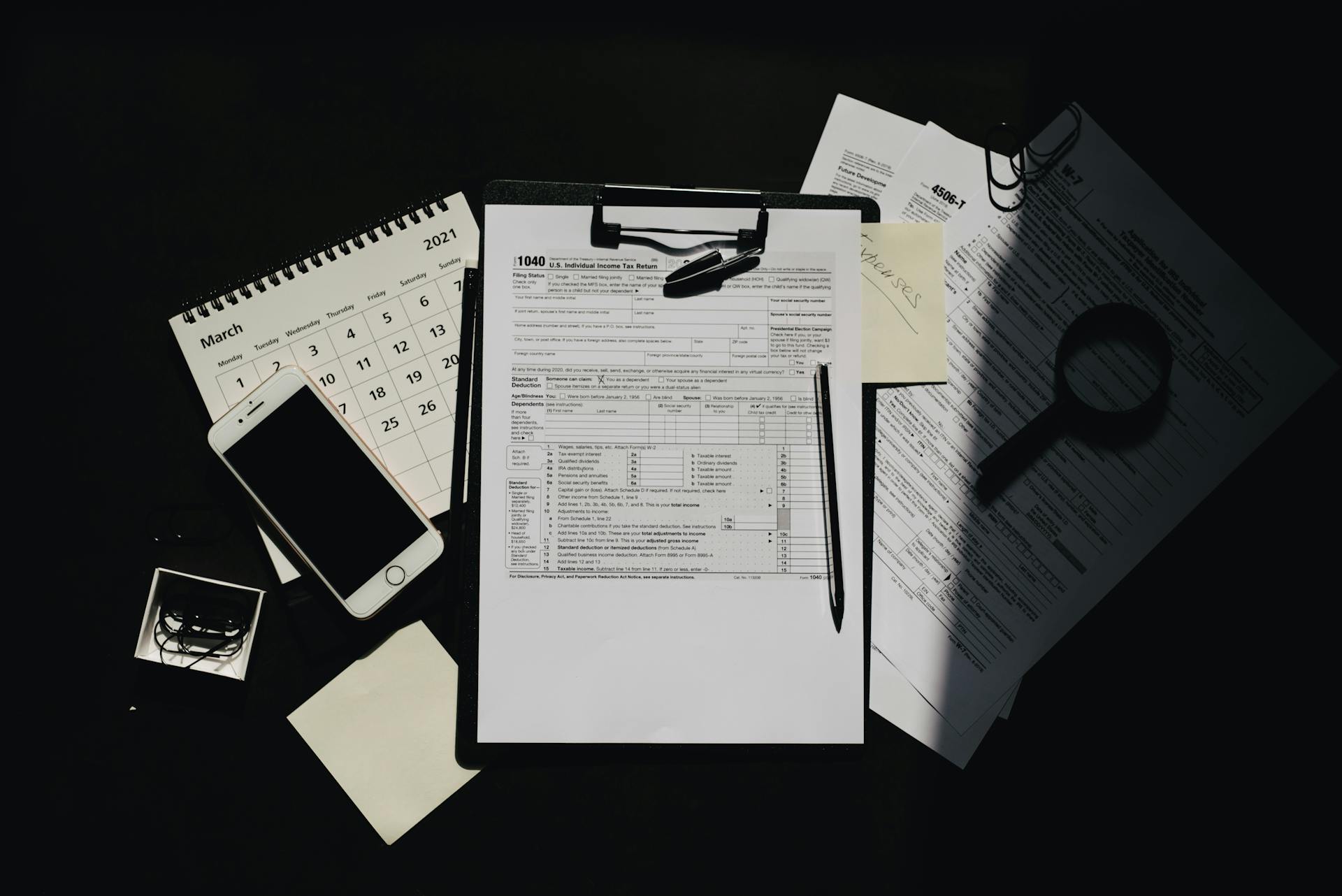
An audit financial statement is a thorough examination of a company's financial records to ensure accuracy and fairness. This process is typically performed by an independent third party, such as a certified public accountant (CPA).
A financial statement audit can be conducted on a company's balance sheet, income statement, and cash flow statement. The auditor will verify the accuracy of the financial information, as well as ensure that the company is following generally accepted accounting principles (GAAP).
Auditors will review a company's financial records, including transactions, accounts, and financial reports. This review helps to identify any discrepancies or irregularities that may be present in the financial statements.
The goal of a financial statement audit is to provide stakeholders, such as investors and creditors, with confidence in the accuracy and reliability of the financial information. By doing so, auditors help to maintain the integrity of the financial reporting process.
For your interest: Asset Management Company Financial Statements
What Is a Financial Audit?
A financial audit is a thorough examination of a company's financial statements and records by an independent auditor. The auditor's report must accompany the financial statements when they are issued.
The purpose of a financial audit is to add credibility to the reported financial position and performance of a business. This is especially important for publicly held companies, which are required by the Securities and Exchange Commission to file annual reports that are audited.
A financial statement audit involves examining financial statements and the underlying data, analyzing business operations and processes, evaluating company assets for impairment and proper valuation, determining tax liability, and ensuring compliance with tax laws.
Audits have become increasingly common due to the complexity of accounting frameworks and disclosures of fraudulent reporting by major companies. In fact, lenders typically require an audit of the financial statements of any entity to which they lend funds.
See what others are reading: Cash Flow Statement Example for Small Business
Financial Audit Process
The financial audit process is a crucial step in ensuring the accuracy and reliability of a company's financial statements. It's a thorough examination of a company's financial records to verify their accuracy and ensure compliance with laws and regulations.
The audit process typically begins with the auditor's planning phase, where they identify the company's internal controls and assess the risk of material misstatement. This phase is critical in determining the scope and timing of the audit.
The auditor will then perform a series of tests, including transaction testing and account reconciliations, to verify the accuracy of the financial statements. These tests help to identify any discrepancies or irregularities that may have occurred during the accounting period.
Discover more: Pci Dss Auditor
Planning and Risk Assessment
The financial audit process starts with planning and risk assessment. This step involves gaining an understanding of the business and its environment.
The auditor needs to assess whether there may be risks that could impact the financial statements. These activities are typically conducted prior to the end of the client's fiscal year.
The auditor will use this information to identify potential risks and develop a plan to address them. This helps ensure a thorough and accurate audit.
The auditor must gain a comprehensive understanding of the business to identify potential risks. This includes reviewing the company's policies, procedures, and operations.
By conducting thorough planning and risk assessment, the auditor can identify potential issues early on and take steps to mitigate them. This leads to a more efficient and effective audit process.
Internal Controls Testing
Internal Controls Testing is a crucial step in the financial audit process. It involves assessing the effectiveness of a company's internal controls, focusing on areas such as proper authorization, asset safeguarding, and segregation of duties.
This can involve conducting tests on a sampling of transactions to determine the level of control effectiveness. A high level of effectiveness allows auditors to scale back some of their later audit procedures, reducing the cost of the audit.
Internal controls testing is a critical analysis of a company's internal controls and their efficacy in eliminating material misstatements in financial statements. These internal controls can include automated systems and processes to ensure operational efficiency, asset safeguarding, and accurate transaction reporting.
You might like: What Is a Depreciating Asset
There are various risk assessment questionnaires available to assist with internal controls testing. These questionnaires can help auditors identify potential risks and evaluate the effectiveness of a company's internal controls.
If internal controls are ineffective, auditors must use additional procedures to examine financial statements. This can increase the cost and complexity of the audit process.
Here's a summary of the key aspects of internal controls testing:
- Internal controls testing assesses the effectiveness of a company's internal controls.
- Focus areas include proper authorization, asset safeguarding, and segregation of duties.
- A high level of control effectiveness allows auditors to scale back audit procedures.
- Internal controls testing is a critical analysis of a company's internal controls and their efficacy.
- Risk assessment questionnaires can assist with internal controls testing.
Substantive Procedures
Substantive Procedures are a crucial part of the financial audit process. They involve a series of tests and verifications to ensure the accuracy and reliability of a company's financial statements.
During substantive procedures, auditors will conduct a ratio comparison with historical, forecasted, and industry results to spot any anomalies. This helps identify potential issues that need to be discussed with the client.
Auditors will also review bank reconciliations, count on-hand cash, confirm restrictions on bank balances, and issue bank confirmations. This ensures that the company's cash transactions are properly recorded and accounted for.
A physical inspection of assets may also be required, especially if there are any concerns about the company's inventory or fixed assets. This helps verify the existence and valuation of these assets.
Auditors will confirm account balances, investigate subsequent collections, and test year-end sales and cutoff procedures for accounts receivable and payable. This ensures that these accounts are accurately recorded and that any potential issues are identified.
The audit team will also make numerous inquiries with the client's employees to gather information about various issues and to determine if any adjusting entries are needed. This helps ensure that the financial statements are accurate and complete.
Here are some of the substantive procedures that auditors may perform:
- Analysis: Conduct a ratio comparison with historical, forecasted, and industry results to spot anomalies.
- Cash: Review bank reconciliations, count on-hand cash, confirm restrictions on bank balances, and issue bank confirmations.
- Accounts receivable: Confirm account balances, investigate subsequent collections, and test year-end sales and cutoff procedures.
- Inventory: Observe the physical inventory count, obtain confirmation of inventories held at other locations, and test shipping and receiving cutoff procedures.
- Fixed assets: Observe assets, review purchase and disposal authorizations, review lease documents, and recalculate depreciation and amortization.
- Accounts payable: Confirm account balances, and test the year-end cutoff.
- Accrued expenses: Examine subsequent payments, compare balances to prior years, and recompute accruals.
- Debt: Confirm with lenders, review lease agreements, and review references in board of directors minutes.
- Revenue: Examine documents supporting a selection of sales, review subsequent transactions, and recalculate percentage of completion computations.
- Expenses: Examine documents supporting a selection of expenses, review subsequent transactions, and confirm unusual items with suppliers.
Types of Financial Audits
There are several types of financial statement examinations, each with its own level of expense and assurance.
An audit is the most expensive and time-consuming examination, but it also results in the most robust opinion regarding the state of a client's financial statements.
A review is less expensive than an audit, but more expensive than a compilation. It provides limited assurance that there are no material modifications needed for the financial statements to be in conformity with the applicable accounting framework.
A compilation is a service to assist management in presenting financial statements, with no activities to obtain assurance that there are no material modifications needed.
Publicly held entities must have their quarterly financial statements reviewed, in addition to the annual audit, due to stricter audit standards from the Public Company Accounting Oversight Board (PCAOB).
Here are the main differences between audits, reviews, and compilations:
Financial Audit Benefits and Limitations
A financial audit provides several benefits, including enhancing the qualification of business processes and providing assurance to investors. An audited financial statement offers a high, but not absolute, assurance that the amounts included in the company's financial statements are free from any material misstatement.
Regular audits can also provide a true and fair view of a company's financial situation, stating that financial statements show a true and fair view in all material aspects and are prepared according to generally accepted accounting principles. This is a significant advantage for investors and lenders who rely on accurate financial information.
Worth a look: XBRL Assurance
Here are some of the key benefits of a financial audit:
- Enhances Qualification of Business Process
- Assurance to Investors
- True and Fair View
- Provides Consistency
However, financial audits also have some limitations. The auditor cannot obtain absolute assurance, and there is an unavoidable risk that some material misstatements may remain undetected. This is due to the inherent limitations of an audit, which is based on persuasive evidence rather than conclusive proof.
Benefits
A financial audit provides numerous benefits to a company and its stakeholders. Enhancing the qualification of business processes is one of the key advantages, as it helps identify areas where management can improve their controls or processes, adding value to the company.
An audited financial statement provides assurance to investors that the amounts included in the company's financial statements are free from any material misstatement. This is especially important for lenders and investors who require audited financials to maintain a line of credit or prove compliance with loan covenants.
An unqualified audit report provides a true and fair view of the company's financial statements, stating that they show a true and fair view in all material aspects and are prepared according to generally accepted accounting principles.
Regular audits also provide consistency in financial reporting, allowing users to rely on the information when analyzing different companies and making decisions.
Here are some specific benefits of financial audits:
- Enhances qualification of business processes
- Assurance to investors
- True and fair view
- Provides consistency
Limitations
The financial statement audit process has some inherent limitations that are worth noting.
The auditor cannot obtain absolute assurance. This means that even with the best efforts, there's always a chance that some material misstatements may remain undetected.
It's due to the nature of financial reporting, audit procedures, and limitations concerning time and cost. These factors contribute to the auditor obtaining persuasive evidence rather than conclusive evidence.
Financial audits are a crucial process, but they're not foolproof. There's an unavoidable risk that some material misstatements may remain undetected due to the inherent limitations.
Here are some key limitations of the financial statement audit process:
- The auditor cannot obtain absolute assurance.
- It is due to the inherent limitations of an audit due to which the auditor obtains persuasive evidence rather than conclusive.
- It arises from the Nature of financial reporting, audit procedures, and Limitations concerning time and cost.
Frequently Asked Questions
When should audited financial statements be submitted?
Audited financial statements must be submitted by the 15th day of the fourth month after the company's year-end date. This deadline may vary depending on the company's fiscal year start date.
Sources
- https://www.grantthornton.com/services/audit-and-assurance-services/financial-statement-audit
- https://www.accountingtools.com/articles/what-is-a-financial-statement-audit.html
- https://www.accountingtools.com/articles/audited-financial-statements
- https://www.gsquaredcfo.com/blog/financial-statement-audit-preparation
- https://www.wallstreetmojo.com/financial-statement-audit/
Featured Images: pexels.com


